
Peak Design ha built a company by holding three successful crowd-funded Kickstarter campaigns for their innovative Capture and Capture V2 Camera Clip mounting systems and Leash & Cuff accessories. Having reviewed the Peak Design CapturePRO a while back, I found it to be well-engineered and well-built and I was impressed enough that I wanted to try out more of Peak Design’s gear. So I was quite excited to be given the opportunity to evaluate the three new products from Peak Designs’ latest Kickstarter campaign, the Slide, Clutch and Anchor Links camera accessories. Each appeared to have a similar style and features to Peak Designs’ existing products, but I wondered how they would stack up against the CapturePRO. Time to find out. Gadget on!
Background
Kickstarter is a crowdfunding site. Crowdfunding is a way for creative folks to turn an idea into a reality by asking other folks to “back” their projects, collectively pooling their money in support of a campaign to turn the idea into a product. That idea might be a musical album, game, clothing, gadget or any number of things. Kickstarter has taken this idea and run with it, giving creative folks a centralized place to get potential backers interested in their ideas.
As mentioned above, Peak Design has run three successfully-funded Kickstarter campaigns for their Capture Camera Clip mounting system, Leash & Cuff camera straps and Capture V2, an augmented version of the Capture, all of which (except the now discontinued original Capture) are now available for retail sale through the Peak Design site.
I consider myself to be a very amateur photographer; I’m really more of a guy who likes to take photos, mainly of my kids’ activities, family events and vacations. I have a Nikon D5100 as my main camera. Well, my iPhone 4S is really my main camera, but you know that I mean. Lugging the big Nikon DSLR around can sometimes be challenging. In the time I’ve been reviewing products here at The Gadgeteer, I’ve tried out a few camera-related accessories, including the Carry Speed DS-SLIM Camera Sling Strap. I liked the DS-SLIM strap, but I’d been wanting to try something a bit more straightforward and simple in design. Last year I reviewed the Peak Design CapturePRO Camera Clip and I was very impressed with the design and construction of the CapturePRO, so much so that I considered purchasing some of Peak Design’s other products, but never got around to it. Recently I was given the opportunity to try out some of Peak Design’s latest…well, designs…from their most recent Kickstarter campaign, which are shown here.
Packaging
The Slide, Clutch and Anchor Links arrived in finished-looking retail-type packaging, which was impressive as finished packaging is not always available with in-progress Kickstarter campaign items. Each package depicted the respective product inside it with a photo on the front.
The back of each package had additional photos depicting each product in use.
The sides of the box showed the contents of each box pictorially, which is a useful feature.
Opening the front flap of each package, the product inside it is clearly visible, a feature that I really like in a product package.
Having the ability to see the actual product, and in this case, even touch it, goes a long way toward helping inform a potential buyer.
Also inside each flap is a bullet list of features of each product.
Above is a card included with my shipment that gives some quick info on each item.
Anchor Links
Let’s start with the Anchor Links, a product which is available separately, but that is actually common to all three products reviewed here. The Anchor Links is essentially a novel (patented, in fact) method of attaching a camera strap to your camera.
Above, the contents of the Anchor Links package, which included:
- 4 Anchors
- 2 Links
- Instruction manual
Anchor is very simple but cleverly-designed. It consists of a plastic disk, into which the Peak Design “PD” logo has been molded on either side. The disk is made of Delrin, a relatively soft plastic, so as not to scratch your expensive camera body. Molded into the disk is a braided Vectran cord which can support up to 100 lbs. Although this cord material has a high tensile strength for this application, it appears that Peak Design wants to warn the user that if the cord becomes frayed, the Anchor should be replaced. This, along with the ability to switch quickly between multiple cameras, may be why multiple Anchors are included with each of these items. Not too sure about the longevity of these Anchors, but this is something that would only be known over time.
The Anchor Link would not be complete without the Link portion, which is a spring-loaded clip that retains the Anchor and attaches to any camera strap up to 12mm wide.
Let’s see how it works.
The first step in removing the Anchor from the Link is to pinch the Anchor down into the Link, compressing the Link’s internal spring mechanism, then slide the Anchor up toward the strap attachment end of the Link.
This pinch-and-slide action releases the Anchor from being retained in its spot in the Link.
Now, the Anchor is free of the Link. Note the strap slot on the right side of the Link. As mentioned above, any camera strap up to a width of 12mm, which is a common width for the end of a camera strap, can be attached here.
Of course, to replace the Anchor into its spot in the Link, the process is reversed and the Anchor is locked back in, safe and very secure. And all done with one-handed ease. Based on this design, I think it would be very difficult for this mechanism to accidentally release and allow the Anchor to come loose.
Slide
Next up, the Slide. The Slide can be used as a shoulder strap, sling strap or neck strap (if you reeeally want to look that touristy). I took the Slide on week-long family vacation to Virginia, in which I was using it with my DSLR every day on walking trips around America’s Historic Triangle of Williamsburg, Yorktown, and Jamestown. On a side note, I highly recommend these destinations if you’ve never been—they are packed with early American and Revolutionary War era history galore, and it’s a beautiful part of our country.
Above, the contents of the Slide package, which included:
- Slide with integrated Links
- 4 Anchors
- ARCA-type tripod quick-release plate
- Hex key tool
- Microfiber drawstring storage bag
- Instruction manual
The Slide includes two Link connectors that are exactly the same as in the Anchor Links kit, but permanently attached to either end of the strap, and of course an Anchor can be attached to each Link. The Anchor’s cord can then be attached to the camera body, allowing it to be used like a shoulder strap, or to the ARCA-compatible quick-release plate, allowing it to be used like a sling strap.
As mentioned above, the Slide also includes an ARCA-type quick-release plate that attaches to the threaded tripod mount on the bottom of a camera body, as well as mating with Peak Design’s Capture camera clip. In addition to the Anchor’s cord connecting directly to the camera body, one or both of the Anchor’s cords can be attached to any of the corner-mounted connector points (AKA holes). The plate can then be threaded into the bottom of the camera body. One of the great features of these products is versatility, and the Slide can be configured to attached to your camera in several ways.
The quick-release plate helps facilitate attachment to and removal of the camera to a tripod while keeping the Slide strap attached. As mentioned above, either one, as seen above, or both of the ends of the Slide can be attached to holes in each of the four corners of the plate. This allows the Slide to be used like a sling strap, but without compromising the tripod mount.
This plate is a slightly different design than previous Peak Design tripod plates, a bit more streamlined and low-profile. In addition, the previous D-ring used to tighten the screw has been removed. However, the plate can be tightened down using the supplied hex key tool, or a coin can be used to tighten the screw via the slot in the bottom as seen above.
The Slide is made of patent-pending tubular seatbelt-type webbing which gives it just a bit of padding and a clean, simple look and smooth feel. In addition, it includes several strips of grippy material on one side, so the Slide can be easily flipped over to use it as a shoulder strap and prevent it from sliding down your shoulder if you are wearing a slippy material.
The Slide’s adjustment bar can be lifted and adjusted easily so that it fits comfortably depending on your preference. Lift the bar and pull it upward to tighten, then lock it down to keep it in place.
One thing I noticed during my time using the Slide on our family vacation to Virginia was that the Slide’s adjustment mechanism seemed to gradually migrate downward, as if it could not remain locked in place. The adjustment bar seemed to lift upward on its on and not remain in a locked position. I found myself having to periodically cinch it back up to where I wanted to wear the camera. Not sure if this was a manufacturing defect or design defect.
Above, a photo demonstrating the attachment of one of the Slide’s Anchors to the shoulder strap feature on the camera’s body, which was accomplished rather easily. Just slide the Anchor’s cord into the bar on the camera body, loop the cord around the Anchor’s disk, and lock the disk into the Slide’s Anchor.
I used the Slide with each end attached to directly to the camera body. If I had been using my tripod, I would probably have tried attaching the Slide to the quick-release plate, or to a combination of the plate and camera body. The configuration shown above worked well for me.
Another thing I noticed about the Slide was that, as I took the Slide off and put it back on, or walked around with the camera hanging at my side, the Anchor’s cords seemed to get twisted up a fair amount, and I had to untwist it fairly often. This would probably be the case with most camera straps, but it made me wonder if this would further contribute to the Vectran cords on the Anchors wearing out more quickly. This could be addressed in a future version of the Anchor Links system could address this, perhaps with some type of swivel mechanism.
Above, a photo of the Slide configured to be carried with one of the Anchor cords attached directly to the camera body, the other to a corner of the quick-release plate, which has been screwed into the threaded tripod hole on the bottom of the camera body.
The above configuration would have allowed me to use the Slide with my tripod. Again, one of the features of these products is versatility. The configuration above is just one way that the Slide can be set up, depending on your usage needs and preferences.
Clutch
Finally, the Clutch hand strap. I did not field test the Clutch as extensively as I did the Slide, but I did use it around the house a bit.
Above, the contents of the Clutch package, which included:
- Clutch with integrated Link
- 2 Anchors
- ARCA-type tripod quick release-plate
- Hex key tool
- Microfiber drawstring storage bag
- Instruction manual
The Clutch is attached to your camera in at points. The first is via the fabric loop and tension clip, as shown above.
The loop passes through the strap bar on the camera body, the tension clip secures it.
Like the Slide, the Clutch includes an ARCA-style quick release plate that can be screwed into the camera body via the threaded tripod mounting hole on the camera’s underside. The plate is attached to the Clutch via the cord on the Clutch’s Link connector.
This quick-release plate is identical to the one included with the Slide.
The included hex key tool can be used to tighten the plate to the camera body, or a coin can be inserted into the slot to tighten it also.
Once tightened, the plate is solidly attached to the bottom of the camera body.
The Clutch then hangs off the side of the camera.
The Clutch is adjusted to the user’s hand size and comfort preference by tightening or loosening the cinching buckle. Just pull on the strap with the Peak Design “PD” logo on the tip. It can be quickly and easily tightened for shooting, or loosened to access the controls.
The underside of the Clutch’s padded hand grip is made from a soft hypalon material, which has a textured pattern that is similar to the pattern of the grippy material on the Slide.
Once installed, the Clutch looks like belongs on my Nikon DSLR, even down to the color matching.
I was able to adjust the Clutch to fit my hand easily by pulling on the strap. One feature that might be nice to have here is a clip or some way to fasten the loose end of the strap down once adjusted, but this is more a suggestion than a must have.
I almost forgot the Clutch was there, which is exactly what you want in a product like this—it should not interfere with the operation of the camera.
The Clutch provides ready access to all of the camera’s functions and is great for action shooting.
Compatibility with Capture
I would be remiss if I did not explain the compatibility of the Slide, Clutch and Anchor Links with Peak Designs’ existing Capture camera clip.
In the photo above, on the left is the quick-release plate that came with the CapturePRO that I reviewed a while back, and on the right is the quick-release plate that came with both the Slide and the Clutch in this review. You can see that the newer design has a smaller footprint mainly through a reduction in the size of the and the attachment points for the Anchor cords.
Additionally, as described above, the newer plate on the right has had the D-ring replaced with a coin slot for tightening, while both designs can be tightened with the supplied hex key tool.
The plate that came with the CapturePRO base fits into the base’s locking mechanism, but the plate protrudes a bit in all directions.
The newer plate also fits into the base’s locking mechanism, but because it is more low-profile, it does not protrude much at all, giving a slimmer overall look.
Conclusion
The Peak Design Slide, Clutch and Anchor Links are all very simple, easy-to-use and well-built camera accessories, like the CapturePro camera clip that I previously reviewed. The Anchor Links, the heart of this system of products, is simply and quickly attached to a camera body or to an existing camera strap, and can be removed just as easily. The Slide’s integration with both the Anchor Links as well as a new ARCA-type quick-release plate give it quite a bit of versatility in methods of attachment. And finally, the Clutch has a similar degree of versatility to the Slide and is very comfortable for action shooting. The only issues I encountered were the Slide’s locking bar, which seemed to loosen over time, requiring me to re-tighten it, and the Anchor’s Vectran cord, which got twisted easily and seemed as though it might fray easily. Overall, however, the Peak Design Slide, Clutch and Anchor Links are well-designed, easy-to-use camera accessories and I plan to continue using them, along with the CapturePro camera clip, for a long time. If you are interested in any of the above, head over to the Kickstarter campaign, which is still in progress, but has only 51 hours left as of this writing. After that, you can check them all out at the Peak Design site.
Update 04/18/15
All great items. I am still using them as of this writing.
Source: The samples for this review were provided by Peak Design. Visit their site for more info.
INIU Mini Portable Charger, Small 45W PD Power Bank, 10000mAh USB C in&Out Fast Charging Pocket Size Battery Pack, Travel Essentials Powerbank for iPhone 17 16 15 14 Pro Air, Xiaomi, Samsung S24 etc
15% OffDEWALT Heavy Duty 3-in-1 Mini Stylus Pocket Pen, Tablet Pens for iPad, EDC Touch Screen Pens, Ballpoint w/Touchscreen Tip, Keypad Tip, Compatible iPhone Stylus Pen, Extra Ink Cartridge, Gifts for Dad
15% OffProduct Information
| Price: | varies by reward level; starts at $15 for Anchor Links, $30 for Clutch and $50 for Slide |
| Manufacturer: | Peak Design |
| Pros: |
|
| Cons: |
|

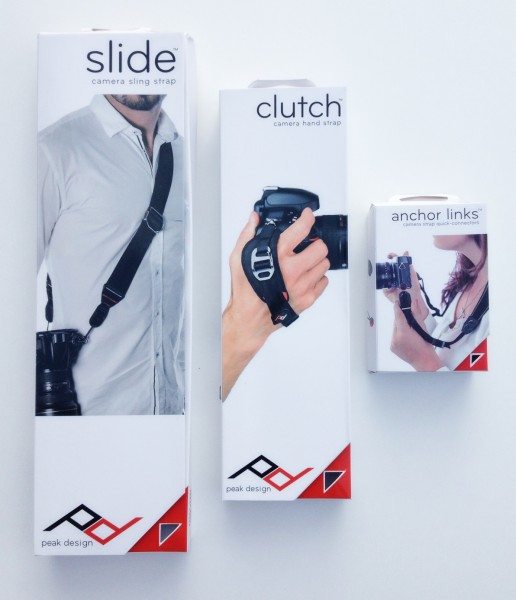


















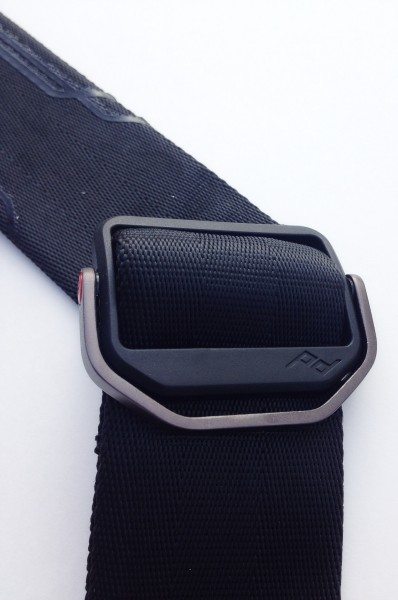

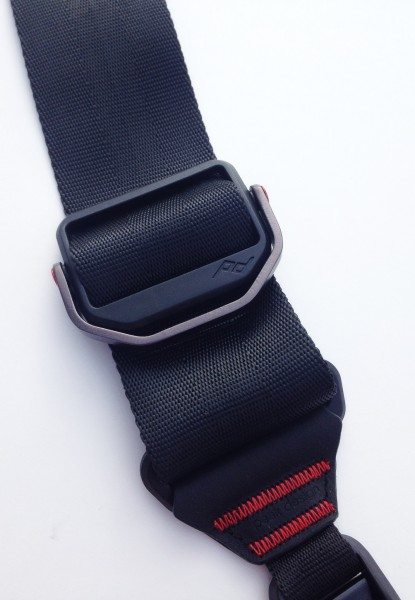










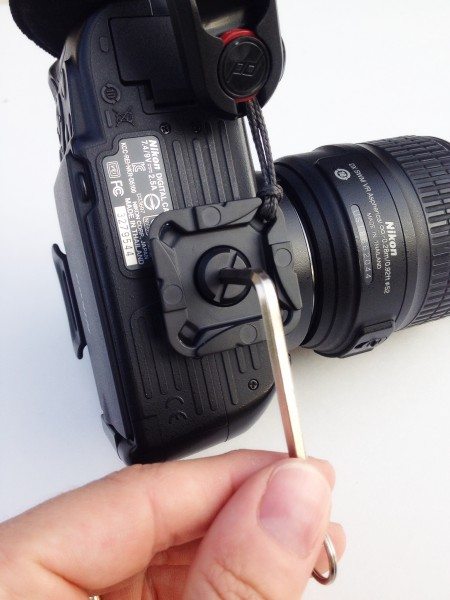




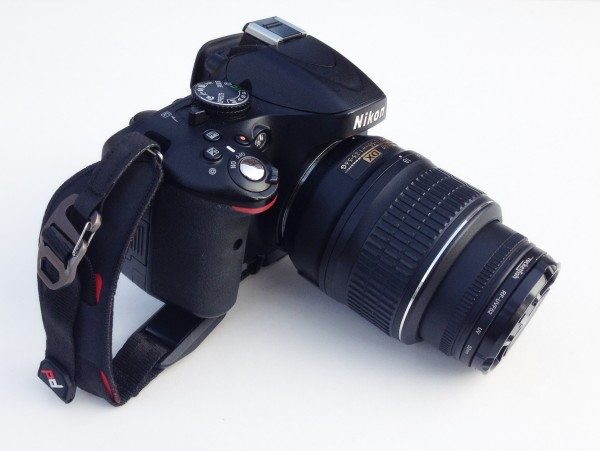









Gadgeteer Comment Policy - Please read before commenting
How much is the one that snaps on to a backpack handle for hikers?
In response to the loosening of Slide’s locking bar:
The Pulls on the media samples we put together were not “square” and “true”. this put outward force on the screw heads which could unscrew them a little. This was worsened by the fact that the screw holes were a little too large and we hadn’t figured out the right threadlocker to use at that point. Now in the Production Models, the pulls are perfectly straight so there is no outward force, the screw holes are tighter and we are using a threadlocker that will go further in preventing any loosening of the screws. We are very happy with the function of the Slide pulls we are seeing right now.
Happy shooting!!
The Peak Design Team
@Daniel – Not sure what you mean? The Capture?
@Peak Design – Thanks for this feedback and good to hear that you have addressed this issue, which was the only real issue I had with any of these three products. I would certainly be interesting in trying out one of the improved production versions when they are available.